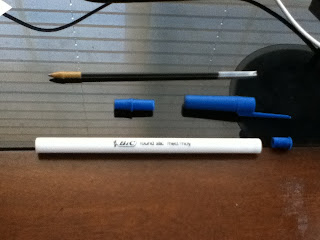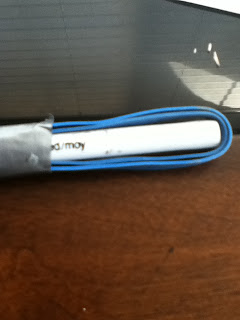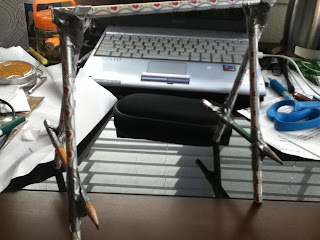There will always be people who are new to jailbreaking that first say "How do I do this" then after jailbreaking ask "What can I get from this".
Even if you are one of those experts who have jailbroken all of your Apple products, or have jailbroken all of your friend's Apple products, there will always be an overlooked gem in the vast sea of jailbroken apps. These are my favorite top ten apps for iOS 5 from the one and only Cydia.
Winterboard~
Winterboard is probably one of the most versatile theming apps that is on Cydia. It allows the user to change system sound effects, the app icon themes, and even things such as the WiFi logo on the status bar. You can even make your own themes, which may be difficult for some who have had very little experience with image editors. Exclusive for iOS 5, the Notification Center background and grabber may also be changed. I myself have set my NC background as an Alienware logo I found from the internet. If you want to create a theme, that will be addressed in my other blog post, soon to come.
SBSettings~
We all have probably at one point or another watched one of our friends use their jailbroken iPods or iPhones to do special things. I remember watching my friend's iPod Touch suddenly drop down a menu from the top of his screen I had never seen before. This app is the famed SBSettings, or StatusBarSettings. By simply sliding your finger across the status bar, a menu with WiFi, Bluetooth, 3G, and many other toggles will magically descend from the top of the screen. This is particularly useful when you don't want to have to scroll through the entire settings app to toggle something. Another great feature is the
ability to customize what is on the status bar. For some odd reason, Apple has decided to not allow the battery percentage to be shown on the iPod Touch. SBSettings fixes this. It also allows you to change your carrier name, which is the text in the top left corner on the status bar that says "iPod" or "Verizon" or whatever. You can change the text to your name, your pet's name, or your friend's pet's name if you really want.
NCSettings~
This sounds a lot like SBSettings doesn't it? Well, they both actually function on the same principle; a menu with toggles you can access anytime in any app. However with the introduction of the Notification Center in iOS 5, you can now put your toggles straight into the NC, hence the name NCSettings. I actually prefer to deactivate my SBSettings window and only use NCSettings, since I don't want to have two menus drop down when I want to access the NC or my toggles. So can NCSettings completely replace SBSettings? My answer is no. SBSettings comes with other functions for customization that NC does not offer, such as battery percentage and carrier customization. My advice is to install both but deactivate the drop down menu for SBS.
WidgetTask~
Another modification for the NC, WidgetTask puts your multitasking bar in the NC. It is quite convenient when you want everything to be in the same place. Replacing the double-click home button, by pulling down the Notification Center, you can close or open apps, see what's running, and even have the music player controls. Also useful in class if you don't want the teacher to hear *click-click* breaking the awkward silence of the Q&A part of lecture.
Zephyr~
Unfortunately with the new iOS 5, jailbroken multitasking gestures on the iPod and iPhone no longer work. If you were using your multitasking from your jailbreak in iOS4, but decided to update to iOS 5, when you jailbreak, the multitasking gestures option shows up but is unfortunately broken. Zephyr amends this and gives back our gestures, just like we used to have.
Barrel~
If your Apple device's screen was cut out then pasted onto the inside of a barrel, your page turning interface may or may not look quite different, depending on how many times you dropped your iPhone. Barrel lets you customize how you turn the pages of your homescreen, or SpringBoard, as it is more commonly known. You can make your scrolling look as if all of the pages are sides of a cube that rotates, or you can have the apps form into a circle when rotated. The pages can even be scrolled vertically. There are many choices for what you can do with barrel. Plus, it looks cool when you are comparing phones with your friends and your apps rearrange themselves into a Pac-Man head when you scroll.
ColorKeyboard~
Yet another theming app, CK allows you to change the appearance of your keyboard. You can stick with some simple changes, such as changing the key color, or you can completely revamp the keyboard and turn it into a steampunk typewriter. There are also a lot of different customization features, and there are already tons of preset themes that are available for download. On my iPod, I have installed a MacBook Pro keyboard theme, making the keyboard look like a mini MacBook.
iFile~
If you do a lot of downloading and installing on the go without a computer, iFile makes your job a whole lot easier. iFile is essentially explorer.exe for your Apple device. If you don't know what I mean, explorer.exe is that extremely slow and unstable program in Windows that lets you see folders and their contents. With iFile, you can store documents such as PDF's, .doc's, and even some movie files. I even use it to create small themes on the go. If you happen to have Minecraft Pocket Edition or Minebuilder, it is possible to install your own texture pack. Amazing isn't it? If you don't have Minecraft or you just don't care, iFile is still quite useful for storing documents.
Dreamboard~
Dreamboard is just simply amazing. It has allowed me to change my homescreen entirely. Now, I can turn my iPod into an Android look-alike. The weather and clock widget is in the background, there is that curved dialer at the bottom, and the far left page has a web viewing widget I can customize. If you don't like Android, you can run a SnowLeopard look-alike, complete with the drop-down menus at the top. You can even turn your iPhone into a Galaxy S2. There are even other custom themes made by other users that for example allow you to have full control of your device with only one hand. DreamBoard gives you an exciting alternative to the native SpringBoard.
Adblocker~
A very simple app whose name says it all. This app blocks annoying ads that show up in almost every free app you download, whether from Cydia or the App Store. You've probably seen the "Upgrade for $0.99 to get the premium ad-free version!" With Adblocker, you can actually save money and not have to buy the premium versions of apps. Just go to the Adblocker menu and toggle the apps that have ads. Go back to that app and voila! No more ads. Even in Safari, annoying pop-ups that change your tabs bother me so much! Instead, toggle Safari in the Adblocker menu and all of the pop-ups in Safari will cease to appear. This app is a particular favorite, just because of the fact that you can see it working to save you money. And by the way, there is no "Premium upgrade" for this app.
In no particular order, those were my top ten apps available only when you jailbreak. Hang in there for my next post which will be on how to make your own themes for WinterBoard.
 This circuit is necessary for the charger to be accepted by the Apple device. Basically, the USB socket must have exactly 5V on the first pin, 2V on the second and third pins, and ground on the fourth pin. I cannot give step-by-step instructions for soldering in each and every resistor, wire, capacitor, regulator, ect. because depending on the type of PCB board you buy, the pre-made copper insertions on the back of the board are different. Any type of battery above 6 volts will work for this circuit. To use this circuit, just plug in your USB charger cord and plug it into your Apple device.
This circuit is necessary for the charger to be accepted by the Apple device. Basically, the USB socket must have exactly 5V on the first pin, 2V on the second and third pins, and ground on the fourth pin. I cannot give step-by-step instructions for soldering in each and every resistor, wire, capacitor, regulator, ect. because depending on the type of PCB board you buy, the pre-made copper insertions on the back of the board are different. Any type of battery above 6 volts will work for this circuit. To use this circuit, just plug in your USB charger cord and plug it into your Apple device.































